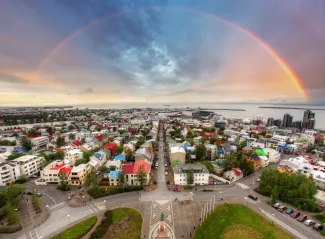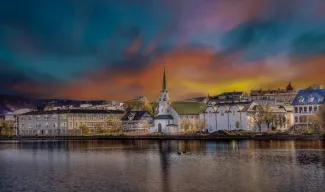In the beginning
At the beginning of the 20th century, using geothermal heat to heat homes was more of an individual thing. In 1908, a farmer near Reykjavik had the idea of laying a pipeline from the nearest hot spring to his house. This was followed mainly by small-scale projects such as greenhouses and houses.
It was not until the 1930s that local authorities began to take an interest in this new form of heating. The Second World War provides momentum:
- Reykjavik is occupied by the allied troops
- Due to the war, fossil fuels are scarce
Due to economic growth during the occupation - the Allies contribute to the local economy - there is capital to also expand geothermal district heating, not only in Reykjavik, but also across the rest of Iceland.
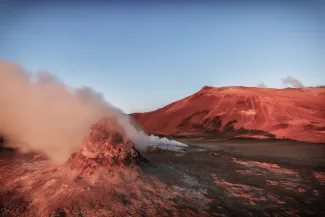
Expansion of a sustainable concept
In the 1970s, two new methods are added to the traditional district heating network.
- Steam from geothermal wells is harnessed to heat cold water, which is then used as the natural geothermal water. Two new power plants are being built for this purpose: Svartsengi in 1976 on Reykjavik's peninsula), and later Nesjavellir Geothermal Station located closer to the city, which also generates electricity.
- In 1978, geothermal heat also began generating electricity at Krafla Geothermal Station
During this period, no doubt fuelled by the fossil fuel crisis, electricity and heat generation are seen as signs of the great potential of geothermal energy. However, when electricity and fossil fuels become cheaper in the 1980s, it proves difficult to convince any more investors, and the growth of geothermal opportunities stalls.
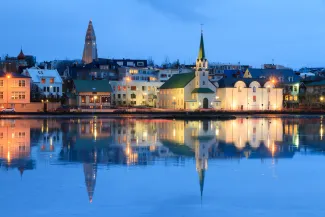
Geothermal energy as an investment for the future
At the beginning of the 21st century, more investments are again being made, and in 2010 Iceland's newest and largest geothermal power plant enters operation: Hellisheidi. With its electrical capacity of 303 MW and 133 MWth of heat, this also makes it the third largest geothermal power plant in the world. Located on the slope of volcano Hengill, it has access to water as high as 300° C. The steam that comes to the surface is fed to seven turbines for electricity generation.
The water coming to the surface is first pressurised to also generate steam for the other turbines. The remaining water that is now cooled goes towards the heat exchanger where fresh, cold water is heated to 80° C. Via a 26 km pipeline, this heated water flows to Reykjavik, where it arrives just one degree Celsius cooler thanks to the pipeline's good insulation.
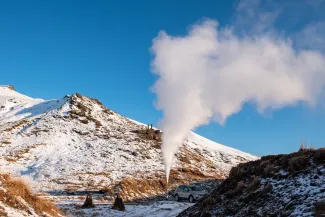
Renewable expertise as an export product
Geothermal energy is fully established here as part of renewable energy: 85% of Icelandic homes are heated with renewable energy, 66% of which with from geothermal applications. Icelandic expertise is now also being exported to other countries in Europe, and around the world.
